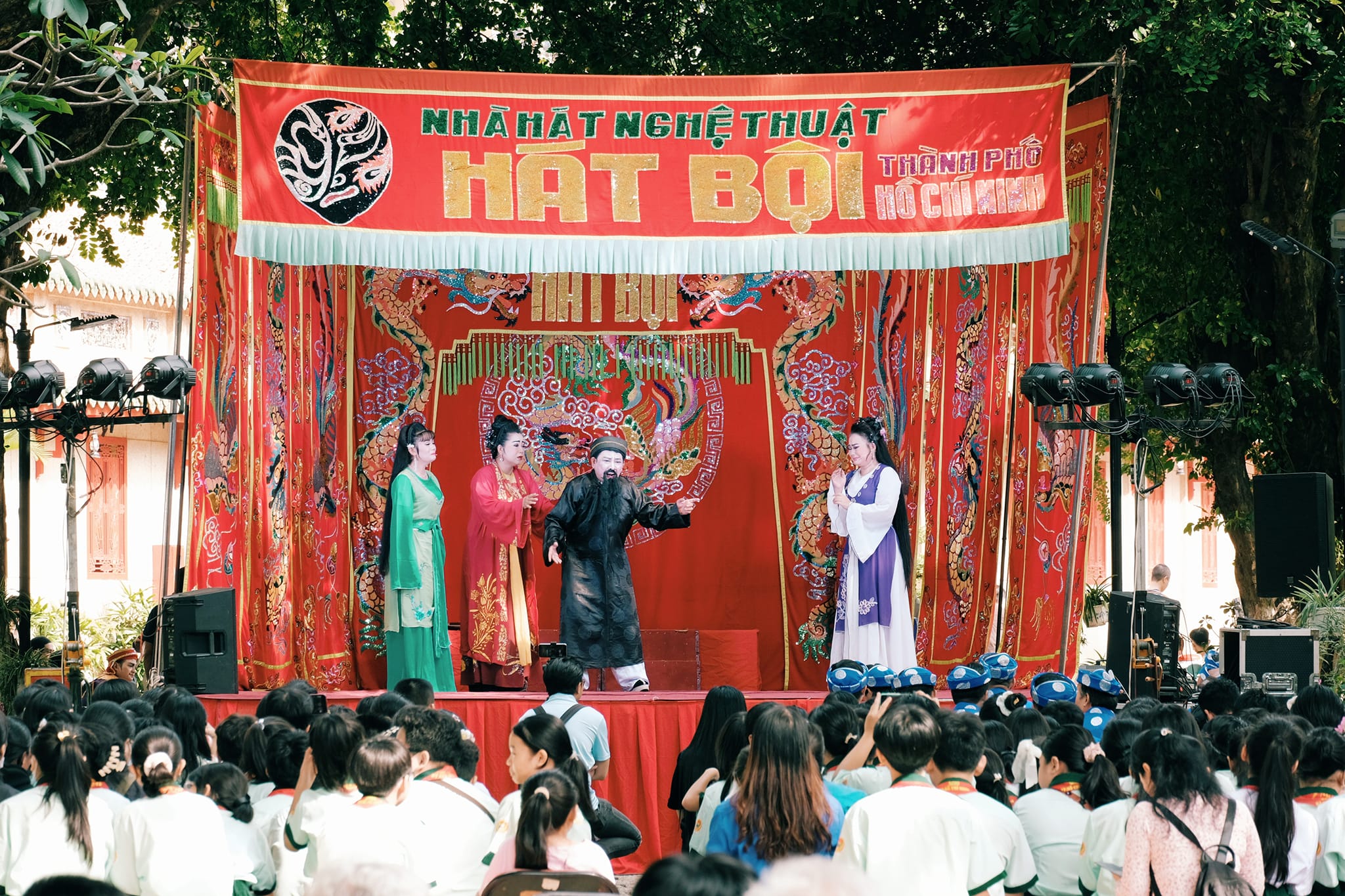Every two weeks at the historical and cultural relic of Lang Duc Ta Quan Le Van Duyet, No. 01 Vu Tung Street, Ward 1, Binh Thanh District, Ho Chi Minh City, there is excitement with the sound of music and elaborately made-up characters in plays. What is special is that underneath, in addition to the hair stained by time, we can easily see young faces, excitedly immersed in the space of a traditional art form: Hat Boi.

Outdoor opera stage at the historical and cultural relic of Lang Duc Ta Quan Le Van Duyet.
Phan Thanh Dat (a freelance photographer in Ho Chi Minh City) shared: "As a person who loves traditional culture, I often look for schedules of art forms such as hát bội, Hồ Quảng... to watch and learn. By chance, I found out that the HCM City Hát bội Art Theater has weekly performances at Lang Ong Ba Chieu, so I decided to go see. Partly to understand more about ancient plays in hát bội art, partly to go backstage to see how the artists put on makeup and prepare, and learn about the arduous process of a hát bội performance. And moreover, I want to capture beautiful photos of the performance and the artists to share with everyone."

The only place to preserve the traditional art form - Hat Boi in Ho Chi Minh City.
From royal art to folk spiritual food
Hat Boi, also known as Hat Boi, Hat Tuong has been around for more than a thousand years. From an art form popular in royal palaces and lords' palaces throughout the years from North to South, Hat Boi quickly spread throughout the people.
The word "boi" in hát bội has many explanations. In the book "Dai Nam quoc am tu vi" by scholar Huynh Tinh Cua, "boi" means a troupe of actors. Scholar Truong Vinh Ky, on the other hand, believes that "boi" means a group of actors, meaning many people participating in the performance.
In terms of art, hát bội is highly symbolic and conventional, built on a profound language foundation, containing profound philosophy. hát bội actors perform not only through each step and gesture, but also through pointing to the sky or to the ground, all following strict principles to express specific meanings.
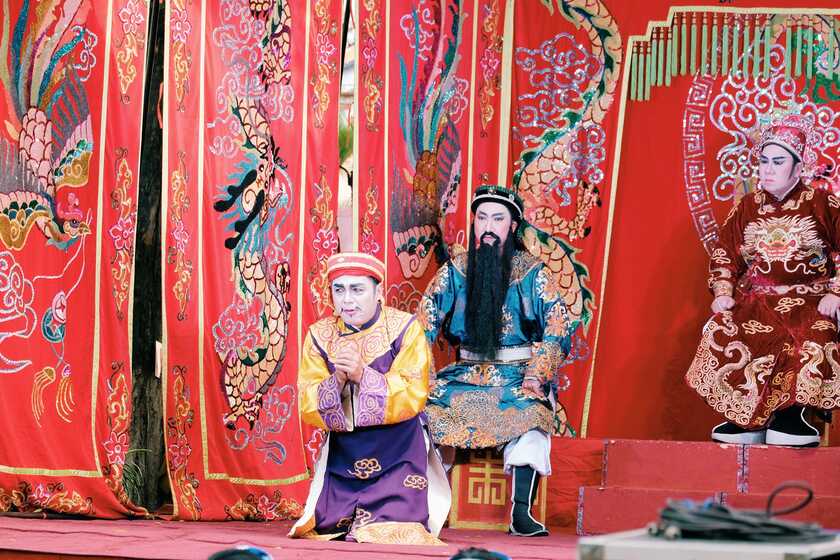
In hát bội, everything follows strict principles to express specific meanings.
Hat Boi pays special attention to every aspect, from the plot content to the performance gestures, movements, lyrics and costumes. During the makeup process, the artist needs to ensure that the expression and color on the face fully reflect the character's personality. Using colors such as red, yellow, black, white... is not only a part of the costume, but also an expression of the psychological characteristics or personality of the character, such as "the unique actor" or "the gentle actor".

During the makeup process, the artist needs to ensure that the expression and color of the face fully reflect the character's personality.

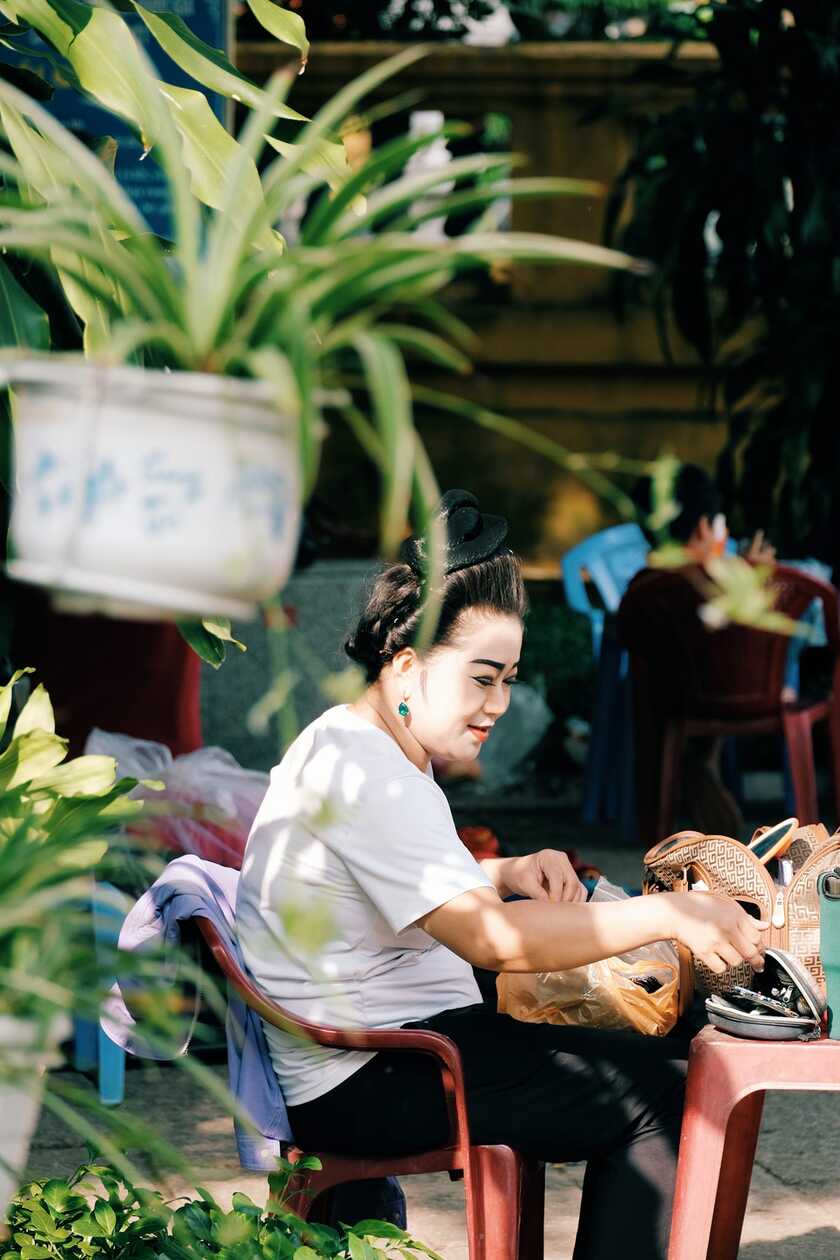
Since the 11th century, the form of singing began to appear at the royal court during the Tien Le Dynasty, became popular in the 13th century during the Tran Dynasty and reached its peak in the 19th century during the Nguyen Dynasty. In the history of Vietnamese opera, two prominent names that cannot be ignored are Dao Duy Tu and Dao Tan. Dao Duy Tu was the first person to introduce the art of Tuong to the Nguyen Dynasty, the person who laid the foundation for opera in the early years of the 17th century.
When hát bội developed strongly in the 19th century, Đào Tấn (1845 - 1907) made an important contribution, creating many excellent works, maintaining the life of hát bội until today. He focused on developing hát bội in a literary direction and reserved it for the royal intellectual class. Overall, hát bội is not only a form of theatrical art but also a cultural heritage with a conventional, profound and philosophical nature.
The further south, hát bội penetrated deeper into folk life. As a lover of hát bội, the left-wing general Lê Văn Duyệt (1764 - 1832) brought this art to the South. With a liberal spirit, he did not limit hát bội to the intellectuals or the upper class, but returned it to the people. He eliminated the complex elements and scholarly rituals of the royal court, and at the same time absorbed the performance style and music from the Chinese community in the South, combined with the open-minded spirit of the new land, hát bội Nam Bộ gradually formed its own characteristics: strong, colorful, vibrant and more cheerful.
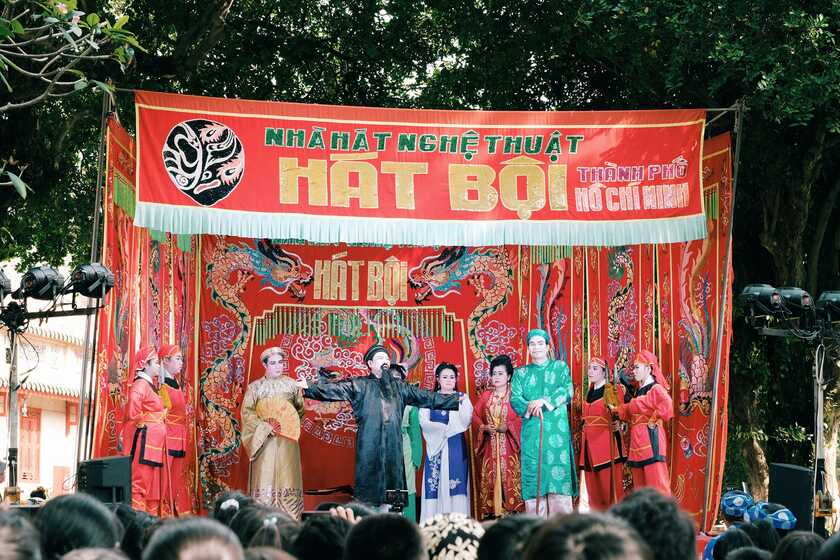
In the South, where there are many temples and pagodas, hát bội becomes an important part of rituals and daily spiritual life.
Through many historical periods, hát bội sometimes lost its position in the royal court but still maintained its place among the people. Especially in the South, where there are many temples and pagodas, hát bội became an important part of rituals and daily spiritual life. At each temple ceremony, the whole village excitedly went to watch hát bội, as joyful as going to a festival.
Hat boi often recreates ancient stories, glorifies heroes and conveys messages about the five virtues of humanity - justice - courtesy - wisdom - trust. This partly reflects the ideology in society, as Phan Ke Binh described in "Vietnamese customs", Hat boi "intends to commemorate the merits of governing the people and defeating invaders of the ancients, to set an example for later kings, and to depict all the characteristics of loyal and flattering people, to set an example for the world...
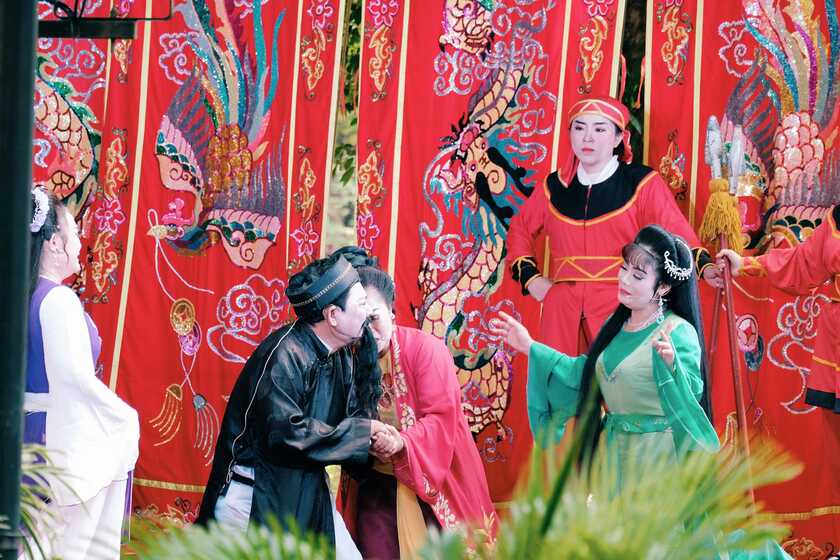
Hat Boi often recreates traditional stories, honors heroes and conveys messages about the five virtues of humanity - justice - courtesy - wisdom - trust.
To bring the flow of hát bội closer to young people
As someone who is interested in the country's traditional art forms, this is not the first time Thanh Dat has gone to see a traditional opera. Before that, he had the opportunity to listen to a opera troupe organized by the Ho Chi Minh City Opera House at the Zoo. Luckily, he was able to go backstage to take photos and interact with the artists, leaving Thanh Dat with many new emotions. Although the long and complicated stories, with complicated sentences, sometimes make the audience not understand everything, the more Thanh Dat went to see them, the more curious, interested and wanted to learn more.
"As far as I know, the art of hát bội is currently quite selective of its audience, especially young audiences who no longer know much about this traditional art. As someone who loves folk culture, I don't want hát bội to be forgotten. I need to take responsibility for preserving it, even if it's just a small part, so I want to learn more, to understand the unique values of hát bội," Thanh Dat confided.


The play Thanh Dat watched at Lang Duc Ta Quan Le Van Duyet was adapted from Nguyen Du's Tale of Kieu, which is also a literary work that he really likes. Sharing with reporters, he said that the artists' makeup was very neat and elaborate, their acting was very immersive, whether the role was big or small, making the audience feel the passion and dedication of the artists to their roles. In particular, during the performances, there was also an interaction with the audience through mini quiz games. The content included information about the art of hát bội, along with instructions on some basic movements by the artists so that young people could learn and understand more about this art form.
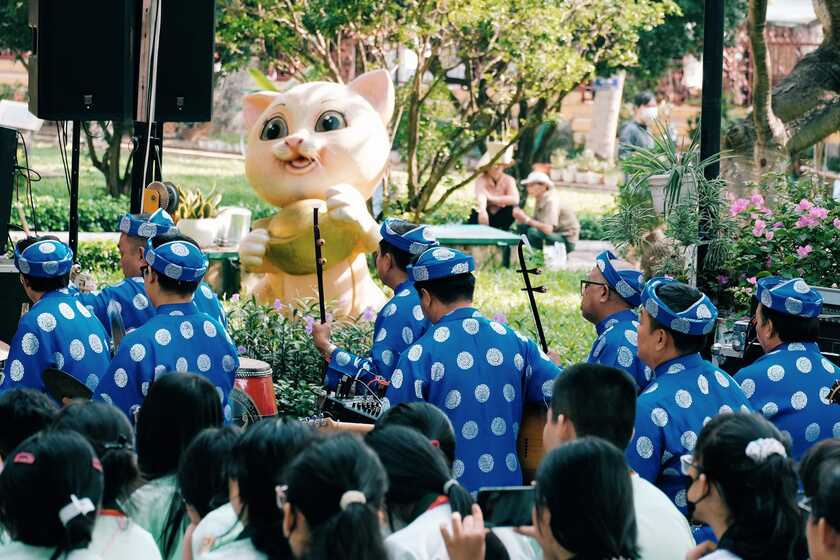
The musicians of the opera troupe.
Sitting in the space of musical instruments and songs, watching the artists who are dedicating themselves day and night to their passion and art to preserve this cultural form, I love and understand more the spiritual and cultural values that Hat Boi brings.
Thanh Dat expressed: "In an era where entertainment and information are increasingly abundant, hát bội is gradually becoming obsolete and less popular. Therefore, the next generations need to appreciate and support those who work in the profession. Young people who love it can come to see the performance to support the artists' spirit. If possible, please share it with your friends and spread the love for hát bội to everyone."





